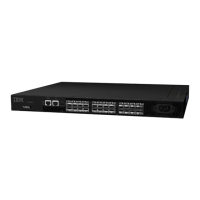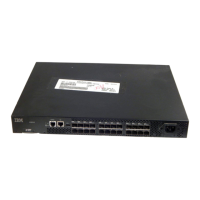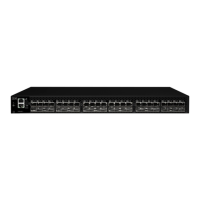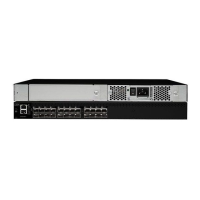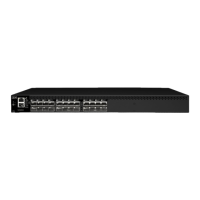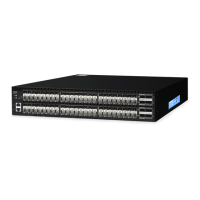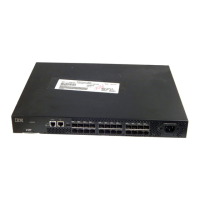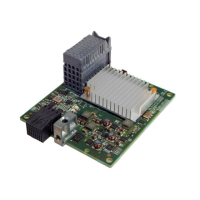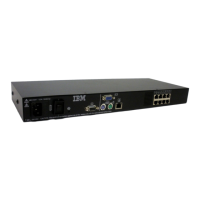Note: QSFP transceivers have pull tabs rather than bails. Always use the pull tab to insert or remove the
QSFP transceivers, as the QSFP might be hot.
Procedure
1. Remove any cables that are inserted into the transceiver.
2. Grasp the QSFP transceiver pull tab and gently pull the tab straight out.
Note: Grasp the pull tab near the body of the transceiver to reduce the chances of bending the pull
tab. As the QSFP may be hot, avoid touching it.
3. To insert the replacement transceiver, use the pull tab to carefully push the transceiver into the port.
Transceivers are keyed so that they can only be inserted with the correct orientation. If a transceiver
does not slide in easily, ensure that it is correctly oriented. Gently push the correctly oriented QSFP
transceiver until the latching mechanism clicks.
Figure 29. Replacing a QSFP optical transceiver
1 - Pull tab
2 - QSFP cable
3 - QSFP transceiver
4. Position a cable so that the key (the ridge on one side of the cable connector) is aligned with the slot in
the transceiver. Insert the cable into the transceiver until the latching mechanism clicks.
Cables are keyed so that they can be inserted in only one way. If a cable does not slide in easily,
ensure that it is correctly oriented.
Verifying the operation of new transceivers
About this task
You can use the following commands to verify if the transceivers are working correctly:
• sfpShow
• switchShow
• errDump
• fabricShow
Example
Refer to the Fabric OS Command Reference for output examples and descriptions.
52
IBM Storage Networking SAN64B-6: SAN64B-6 Installation, Service, and User Guide
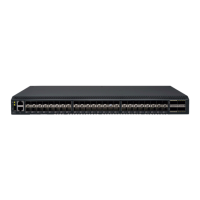
